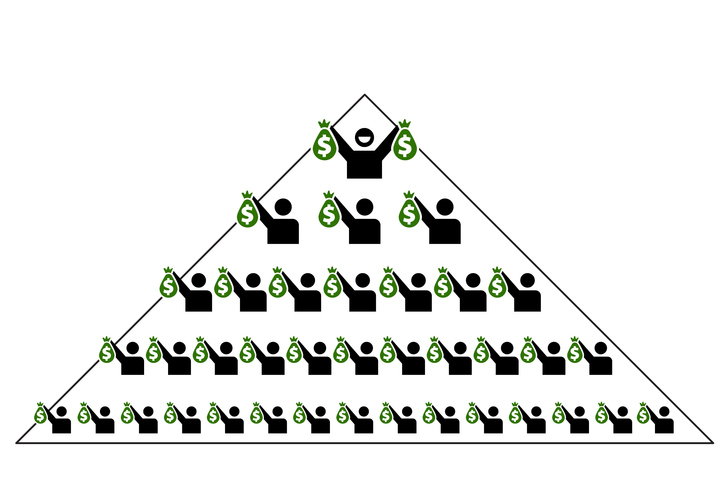Money-supply growth rose year over year in February for the seventh month in a row, the first time this has happened since mid-2022. The current trend in money-supply growth suggests a continued reversal of more than a year of historically large contractions in the money supply that occurred throughout much of 2023 and 2024. As of February, the money supply appears to be continuing in a period of moderate monetary growth coming out of a period of historically large swings in monetary trends from early 2020 to mid-2024.
In February, year-over-year growth in the money supply was at 2.75 percent. That’s slightly below December’s 28-month high of 2.79, February reported the second-largest year-over-year increase since September 2022. February’s growth rate was up from January’s rate of 2.34 percent. It’s also a big change from February 2024’s year-over-year decline of 5.62 percent. Last year, the US money supply was still in the midst of the largest drop in money supply we’ve seen since the Great Depression. Prior to 2023, at no other point for at least sixty years had the money supply fallen by so much.
Following the big swings experienced during 2023 and 2024, money supply growth over the past six months has settled into a relatively moderate growth rate of one to three percent. During that time, the total increase in the money supply has been 1.7 percent, and the money supply slightly declined from December 2024 to February 2025. Looking at month-to-month changes in the money supply, we also find a moderate upward trend. Money supply fell 0.61 percent from December to January, and then moved slightly upward (+0.13) from January to February. Month-to-month growth in the money supply had accelerated through most of the second half of 2024 but then moderated as the year ended and flattened in early 2025:
 The money supply metric used here—the “true,” or Rothbard-Salerno, money supply measure (TMS)—is the metric developed by Murray Rothbard and Joseph Salerno, and is designed to provide a better measure of money supply fluctuations than M2. (The Mises Institute now offers regular updates on this metric and its growth.)
The money supply metric used here—the “true,” or Rothbard-Salerno, money supply measure (TMS)—is the metric developed by Murray Rothbard and Joseph Salerno, and is designed to provide a better measure of money supply fluctuations than M2. (The Mises Institute now offers regular updates on this metric and its growth.)
In recent months, M2 growth rates have followed a similar course to TMS growth rates, although M2 is growing faster than TMS. In February, the M2 growth rate was 3.90 percent. That’s up from January’s growth rate of 3.89 percent. February’s growth rate was also up from February 2024’s rate of negative 1.44 percent. Month over month, however, M2 decreased by -0.12 percent from January to February. That’s the largest month-to-month decline in ten months. Nonetheless, the overall trend for both TMS and M2 continues upward.
Although year-over-year and month-to-month growth rates may be moderating, money-supply totals remain far above what they were before 2020 and the covid panic. From 2020 to 2022, the Federal Reserve’s easy-money policies resulted in approximately 6.4 trillion dollars being added to the economy. This was done to help to finance the federal government’s enormous deficits driven by runaway covid stimulus programs.

Since 2009, the TMS money supply is now up by more than 192 percent. (M2 has grown by 152 percent in that period.) Out of the current money supply of $19.4 trillion, nearly 26 percent of that has been created since January 2020. Since 2009, in the wake of the global financial crisis, more than $12 trillion of the current money supply has been created. In other words, nearly two-thirds of the total existing money supply have been created just in the past thirteen years.
As a result money-supply is now well above the former trend that was in place before 2020. For example, just to get to back to the money-creation trend that existed in 2019 before the “great covid inflation,” total money supply would need to fall by at least three trillion dollars.
In spite of this, the Federal Reserve has shown no appetite for “unwinding” the enormous amounts of new money created since the 2020 covid panic, and the Fed continues to proceed at a snail’s pace when it comes to reducing the Fed’s balance sheet back down to the more “normal” levels that prevailed before the Fed embarked on “quantitative easing” in 2009.
This became clear in September of last year when, in spite of the fact that price-inflation levels had not returned to the Fed’s much-touted two-perfect price-inflation target, the Fed began cutting its target interest rate in an effort to force down interest rates. Over the next three months, the Fed reduced its target policy rate by 100 basis points. This premature turn back to dovish policy paced the way for December 28-month high in monetary growth.

Shortly thereafter, the Fed abandoned its previously stated goals for shrinking its balance sheet. At its March meeting, the Fed’s FOMC, which had previously pledged to reduce its treasury holdings by as much as $25 billion per month, reduced the cap to only $5 billion per month. The FOMC has also capped its mortgage asset monthly drawdown to only $35 billion.
In other words, the March reversal was just the latest capitulation in what the Fed has insisted is an ongoing policy of “quantitative tightening.”
Why do these drawdowns matter? During the global financial crisis and during the covid panic, the Federal Reserve bought up trillions of dollars in mortgage debts and US treasuries to prop up the mortgage industry and to make it easier for the federal government to finance its enormous deficits. These huge purchases put trillions of dollars of new money into the economy. In contrast, when these asset holdings are reduced, that removes money from the economy, and the dollar would regain some of the purchasing power destroyed by monetary inflation. Although the Fed has long claimed that it is committed to reducing these asset holdings—which function as inflationary subsidies for the federal government and for the mortgage industry—the Fed’s total asset holdings still remain well above where they were as recently as 2019.

The creation of this huge portfolio of Federal Reserve assets has created a second major tool for the Fed in its open market operations. As a result, if the Fed is serious about partially undoing the damage it has done with its inflationary monetary policy, the Fed needs to both allow interest rates to rise and aggressively reduce its assets.
It is clear the Fed has little interest in doing either.





























